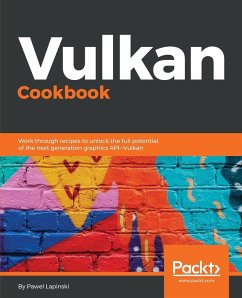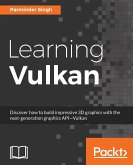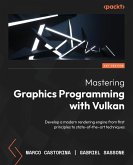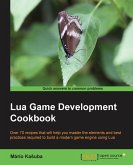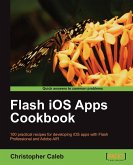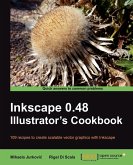Work through recipes to unlock the full potential of the next generation graphics API-Vulkan Key Features This book explores a wide range of modern graphics programming techniques and GPU compute methods to make the best use of the Vulkan API Learn techniques that can be applied to a wide range of platforms desktop, smartphones, and embedded devices Get an idea on the graphics engine with multi-platform support and learn exciting imaging processing and post-processing techniques Book Description Vulkan is the next generation graphics API released by the Khronos group. It is expected to be the successor to OpenGL and OpenGL ES, which it shares some similarities with such as its cross-platform capabilities, programmed pipeline stages, or nomenclature. Vulkan is a low-level API that gives developers much more control over the hardware, but also adds new responsibilities such as explicit memory and resources management. With it, though, Vulkan is expected to be much faster. This book is your guide to understanding Vulkan through a series of recipes. We start off by teaching you how to create instances in Vulkan and choose the device on which operations will be performed. You will then explore more complex topics such as command buffers, resources and memory management, pipelines, GLSL shaders, render passes, and more. Gradually, the book moves on to teach you advanced rendering techniques, how to draw 3D scenes, and how to improve the performance of your applications. By the end of the book, you will be familiar with the latest advanced techniques implemented with the Vulkan API, which can be used on a wide range of platforms. What you will learn Work with Swapchain to present images on screen Create, submit, and synchronize operations processed by the hardware Create buffers and images, manage their memory, and upload data to them from CPU Explore descriptor sets and set up an interface between application and shaders Organize drawing operations into a set of render passes and subpasses Prepare graphics pipelines to draw 3D scenes and compute pipelines to perform mathematical calculations Implement geometry projection and tessellation, texturing, lighting, and post-processing techniques Write shaders in GLSL and convert them into SPIR-V assemblies Find out about and implement a collection of popular, advanced rendering techniques found in games and benchmarks Who this book is for This book is ideal for developers who know C/C++ languages, have some basic familiarity with graphics programming, and now want to take advantage of the new Vulkan API in the process of building next generation computer graphics. Some basic familiarity of Vulkan would be useful to follow the recipes. OpenGL developers who want to take advantage of the Vulkan API will also find this book useful.
Hinweis: Dieser Artikel kann nur an eine deutsche Lieferadresse ausgeliefert werden.
Hinweis: Dieser Artikel kann nur an eine deutsche Lieferadresse ausgeliefert werden.

